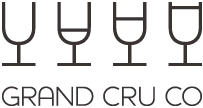A brief look at the past week in wine...
Margaret River takes on new varietals
While Margaret River is reputed for its Chardonnay and Cabernets, some new European varieties have emerged in the region - including one from the Balkans - that are further increasing the diversity of Australian cultivars. Amato Vino is one such Margaret River producer who is stepping away from the mainstream varieties and is the first in Australia to produce the ancient Balkans variety, Slankamenka Bela.
‘I’ve always had a penchant for unusual varieties but it wasn’t until I attended an alternative varieties wine show that I decided to make wine from new plantings of Nero d’Avola, Vermentino and Grillo,’ said owner Brad Wehr. ‘The Slankamenka Bela came about by accident as I thought we had planted a Grillo – a Sicilian variety I am fond of – but after two years of trials we were doubtful the variety was actually Grillo. We undertook DNA testing and discovered it was the Slankamenka Bela, a variety nobody had ever heard of.’ This inimitable wine is medium-bodied and rushes about the mouth with zesty tropical and citrus fruit characters, with a firm line of talc-like minerality.
To pay homage to his family’s Austrian roots, Wills Domain owner Darren Haunold has introduced the first plantings of Scheurebe to the region. This aromatic grape variety, which is mainly grown in Germany and Austria, is a crossing of Riesling and Bouquet Blanc and is certainly tolerating the region’s Mediterranean climate. ‘I wanted to establish a new variety that suited both the terroir and my family’s history. The Scheurebe is grown at a slightly damper spot in the vineyard which suits the variety perfectly,’ said Haunold.
Latour 2000 attracts praise on low price
Latour released its latest set of wines on Tuesday 22 March, as part of its new strategy of putting mature wines onto the market rather than selling them before bottling under the Bordeaux en primeur system. The first wine Château Latour 2000 was released at €770 per bottle ex-négociant from Bordeaux, and was being offered by merchants in London for around £8,000 per case of 12 75cl bottles. The second wine Les Forts de Latour 2009 was released at €150 per bottle ex-négociant.
Data from fine wine trading platform Liv-ex shows that Latour 2000 was being sold at several hundred pounds more than its secondary market price; perhaps suggesting confidence that consumers would pay for the added value of the wine having come direct from Latour cellars in Pauillac. Initial reactions were broadly positive in a market that has been relatively lukewarm to the top Bordeaux wines in recent years.
In Bordeaux itself, most négociants said that Latour 2000 sold out rapidly. An exact figure for the quantity of wine released could not be obtained, but it was believed to be the entirety of stocks left at the château. The price was ‘within reason, allowing some margin to be added by the merchants’, said one broker.
Les Forts de Latour 2009 was reportedly seeing less enthusiasm, because the price offered represented a premium of around 20% on stocks already out on the market.
La Dauphine goes Biodynamic and Organic!
Château de La Dauphine, owned by the Labrune family since December 2015 and with Michel Rolland as consultant, has pressed ahead with organic and biodynamic certification despite difficult vintages during its conversion period.
In 2012, La Dauphine lost 50% of the normal crop from its 40 hectares of vines. The following year, in the even more difficult Bordeaux 2013 vintage, up to 90% of the crop was lost. ‘But we believe in this system, and carried on,’ deputy CEO Stéphanie Barousse told the press, confirming that the estate has now received both Demeter and Ecocert certification. ‘It is wonderful to be now fully certified for the excellent Bordeaux 2015 vintage, which is also back to normal yield for us.’
‘It has been a hard few years but we believe this is an important way to farm our vines, and believe this is the future for quality winemaking.’ Growing numbers of Bordeaux estates have shown interest in organic and biodynamic methods – alongside long-standing converts like Pontet-Canet and Climens. However, a recent investigative documentary aired on French television said the Bordeaux area was the biggest pesticide user in the country.
1855 classified Château Dauzac in Margaux has also signaled that it is increasing its focus on biodynamic farming. It has purchased an extra hectare of land in AOC Margaux that has laid fallow since the 1950s but will be replanted with Cabernet Sauvignon and farmed biodynamically from next year.
Cheers!
The Grand Cru Team




